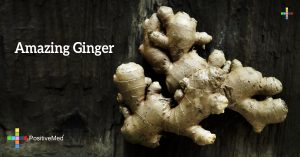Nothing is more important than health. This popular saying (might be even called cliche) is especially current nowadays, when a lot of people die, with no cure and no vaccines, because of the COVID-19 pandemic. Others leave this world equally unnecessarily. For example, those who weren’t diagnosed in time, and lose their fight with cancer. Currently, thanks to Artificial intelligence and its probabilistic modeling, we can significantly improve the prediction of survival in cancer patients. Globally, cancer is the second leading cause of death.

What can science do for cancer patients?
Apparently, it’s able to do a lot! Improving the prediction of survival indicators in patients with breast cancer is a real breakthrough. Not surprisingly, scientists are using tools from artificial intelligence and probabilistic modeling. One of the tools is ModGraProDep, an innovative system presented in a study led by Ramon Clèries, a lecturer at the Department of Clinical Sciences of the Faculty of Medicine and Health Sciences of the University of Barcelona, and member of the Oncology Master Plan/ICO-IDIBELL.
How do cancer cells behave?
When cancer emerges in the human body, it produces aggressive cells. They can evade the body’s growth control mechanisms. These cells are also invasive because they enter and subsume adjacent tissues. And they are often metastatic, which means that they travel and colonize distant sites in the body. One of the greatest unsolved challenges in cancer treatment concerns the frequent relapse of patients being treated by chemotherapy and the emergence of chemotherapeutic resistance in cancers. Mathematical models allow us to quickly search and identify the most effective drug combinations for cancer patients. They deepen our understanding of how and why cancer cells sometimes become resistant to chemotherapy drugs.
The study published in the journal Artificial Intelligence in Medicine
To sum up the cutting-edge technology in medicine regarding cancer, let’s first look at the team that took part in creating the newest study. The new technology’s research has been carried out by a team of experts on epidemiology, oncology and data management of the Oncology Master Plan – IDIBELL, the University of Barcelona, the Technical University of Catalonia, the Catalan Institute of Oncology (ICO), the Girona Biomedical Research Institute (IDIBGI), the University of Girona, the University of Alicante, the Epidemiology and Public Health Networking Biomedical Research Centre (CIBERESP), Carlos III Health Institute, the University Hospital Sant Joan de Reus, the Medical Oncology Service of ICO Girona, the Cancer Registry of Girona and Tarragona and the entity MC Mutual.
Numeric modeling – inputs, and outcomes
To cross another frontier in the fight against cancer, it’s worth reaching for mathematical modeling. There is no denying that mathematics plays an increasingly prominent role in cancer research. Mathematical Oncology—defined as the use of mathematics in cancer research—complements and overlaps with several other fields that rely on mathematics as a core methodology. One of the applications of numerical modeling for clinical indicators on oncology is the creation of predictive models to help oncologists and doctors to classify and value future scenarios of evolution in patients with cancer. Mathematical Oncology has a broad scope, ranging from theoretical studies to clinical trials designed with mathematical models. The prediction of survival in patients, considering variables and ages, is a decisive element to consider treatments and identify subgroups among the patients. For example, we already know that nearly half of Canadians will develop cancer in their lifetime, according to the Canadian Cancer Society.
The application ModGraProDep Technology
Although the information is sometimes estimated through numeric modeling, often, there is not enough sample population to calculate these indicators specifically. The application ModGraProDep Technology (Modeling Graphical Probabilistic Dependencies) led to two studies. The scientific team that created it, designed a web application of great clinic interest in the field of oncology. It enables having a prediction of indicators on survival, and risk of cancer mortality of each patient for twenty years! In the first case, ModGraProDep enables users to identify the structure of the database, and to create a synthetic population of patients with the demographic features of the original cohort. They can, therefore, identify potential patterns of patients and calculate indicators. For example, the survival of a patient depending on the values of his or her variables. In a second study, it’s a new technology that can allocate values in a probabilistic manner in variables, for which there was no information gathered yet.






